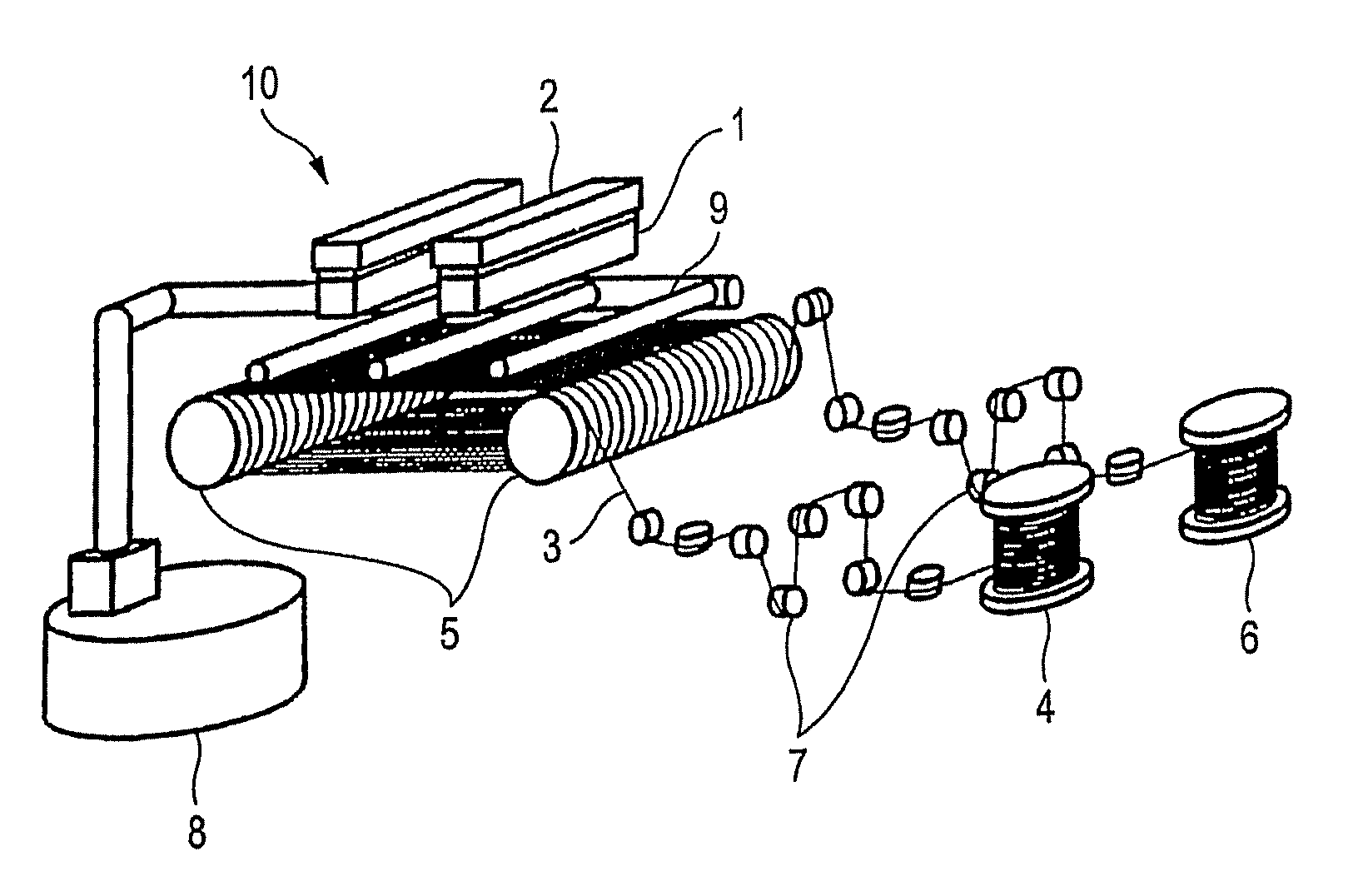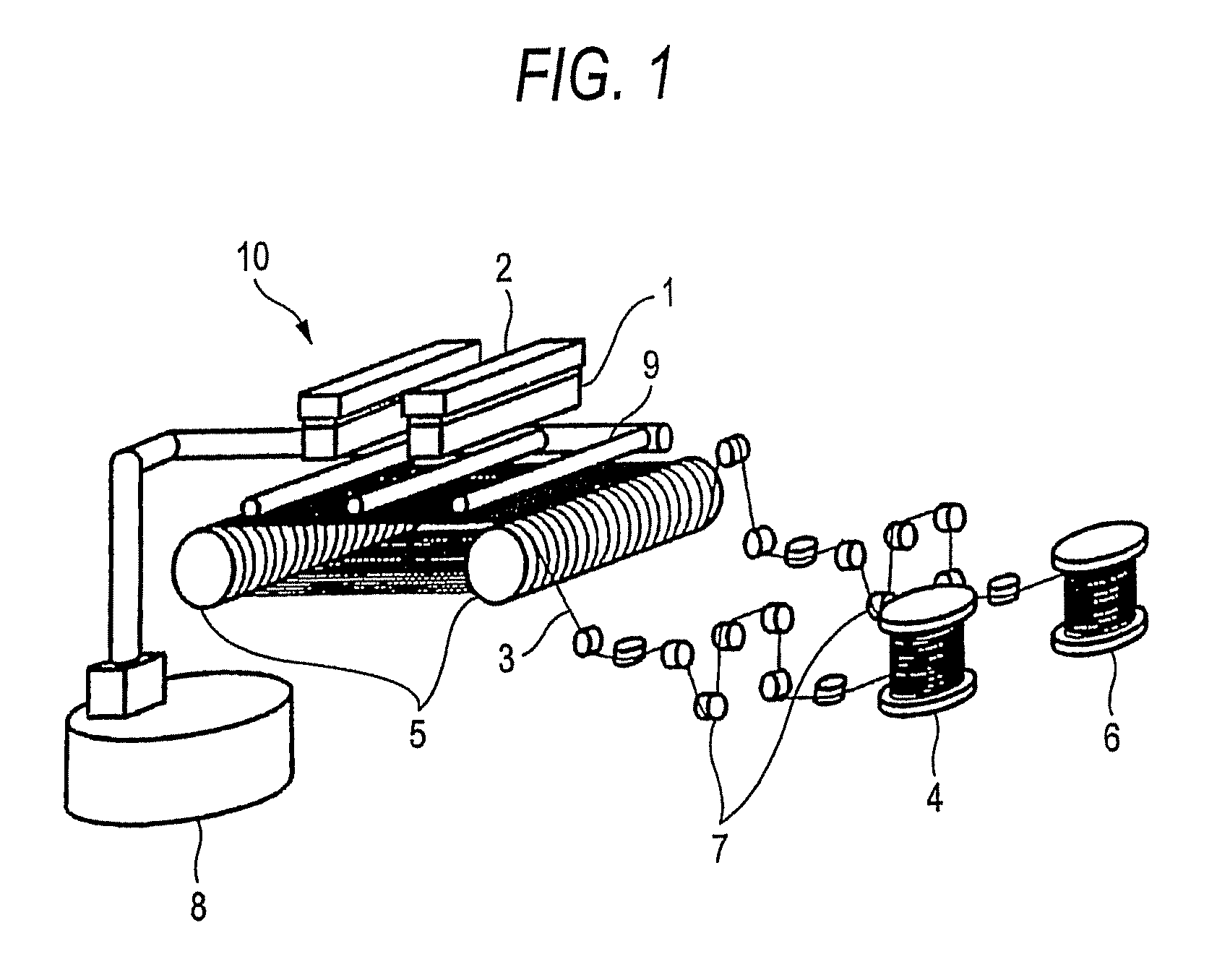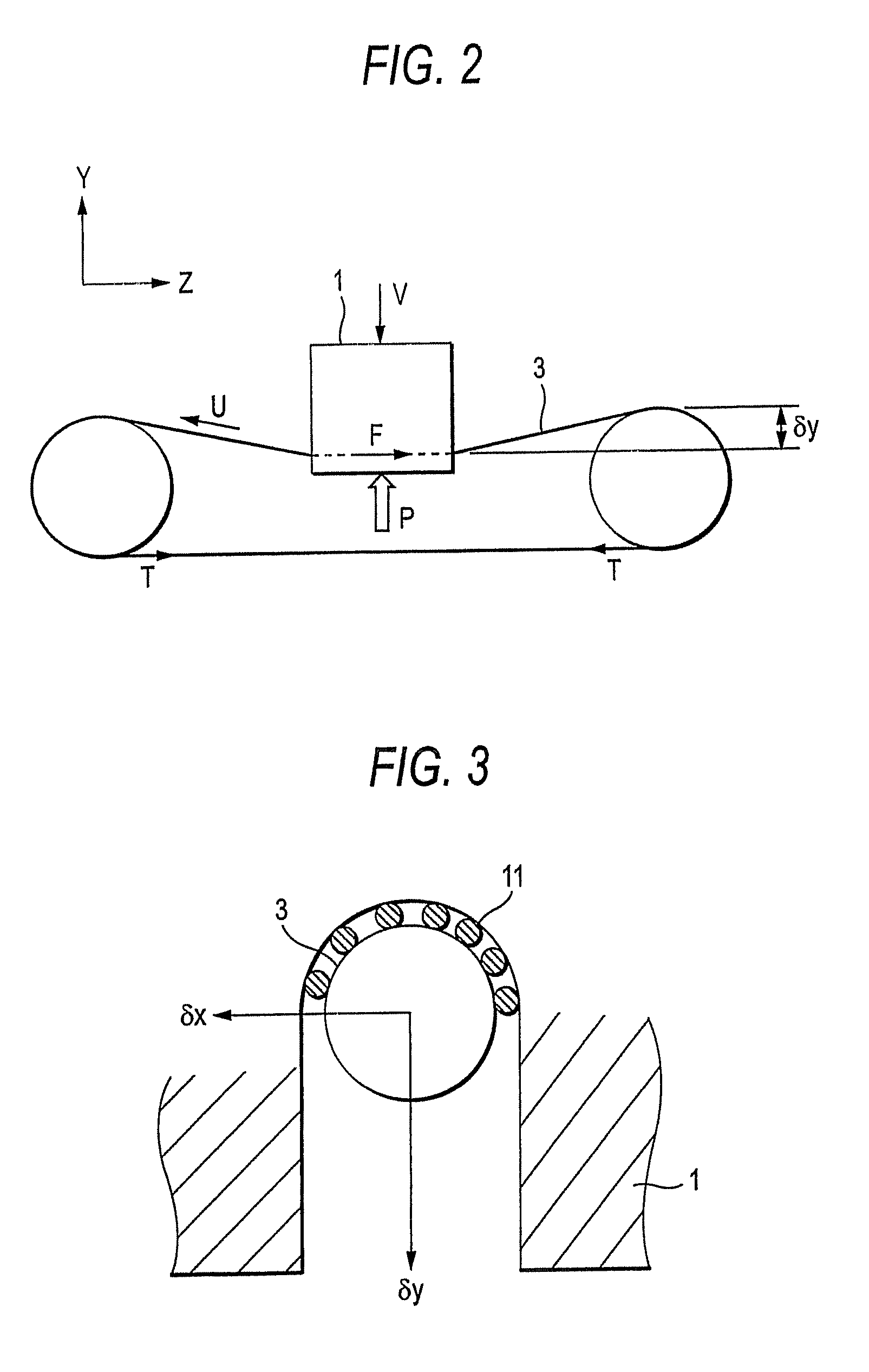Slurry for slicing silicon ingot and method for slicing silicon ingot using the same
a technology of silicon ingot and slurry, which is applied in the direction of manufacturing tools, other chemical processes, chemistry apparatus and processes, etc., can solve the problems of increasing the damage rate of the wafer in the transporting and processing steps of the wafer, increasing the amount of expensive wires, and reducing the thickness of the wafer, so as to reduce the kerf loss and slicing damage, the effect of removing the power of silicon
- Summary
- Abstract
- Description
- Claims
- Application Information
AI Technical Summary
Benefits of technology
Problems solved by technology
Method used
Image
Examples
embodiment 1
[0042]Upon slicing a silicon ingot with a multi-wire saw, it is necessary to supply abrasive powder continuously to the slicing interface in a suitable amount. A wire is used as means for conveying the abrasive powder to the slicing interface, and a liquid is necessarily used as a medium for dispersing and carrying the abrasive powder on the wire and for reducing the frictional force among the wire, the abrasive powder and the ingot and effecting cooling at the slicing interface. It is necessary to manage the viscosity of the liquid within a certain range. In the case where the viscosity is low, the necessary amount of the abrasive powder cannot be carried on the wire, and in the case where the viscosity is high, on the other hand, the liquid cannot permeate to the slicing interface, and thus the necessary amount of the abrasive powder cannot be supplied to the slicing interface similarly. Furthermore, the liquid pressure at the slicing part is increased to cause a force separating ...
example 1
[0067]A mixed liquid of 40% by mass of glycerin, 56% by mass of water and 4% by mass of sodium hydroxide was produced, to which the same amount of abrasive powder were then added, and the mixture was agitated.
embodiment 2
[0085]The second slurry for slicing a silicon ingot of the invention can considerably decrease unevenness in thickness of wafers for solar cells by adding a small amount of a nonionic polymer surfactant to the slurry described in Embodiment 1. As having been described, upon forming a slicing groove with a wire proceeding in the slicing direction, the slurry is continuously supplied to the slicing groove, whereby dissolution of the wafer in the direction perpendicular to the slicing direction (the thickness direction of the wafer) proceeds by the etching action in the slicing initiation part as compared to the slicing termination part of the ingot. As a result of investigations of various kinds of surfactant in order to prevent the dissolution in the part where the slicing operation is completed without decrease in chemical action at the slicing interface, it has been found that the dissolution in the part where the slicing operation is completed can be largely suppressed through red...
PUM
| Property | Measurement | Unit |
|---|---|---|
| average particle diameter | aaaaa | aaaaa |
| length | aaaaa | aaaaa |
| diameter | aaaaa | aaaaa |
Abstract
Description
Claims
Application Information
 Login to View More
Login to View More - R&D
- Intellectual Property
- Life Sciences
- Materials
- Tech Scout
- Unparalleled Data Quality
- Higher Quality Content
- 60% Fewer Hallucinations
Browse by: Latest US Patents, China's latest patents, Technical Efficacy Thesaurus, Application Domain, Technology Topic, Popular Technical Reports.
© 2025 PatSnap. All rights reserved.Legal|Privacy policy|Modern Slavery Act Transparency Statement|Sitemap|About US| Contact US: help@patsnap.com



